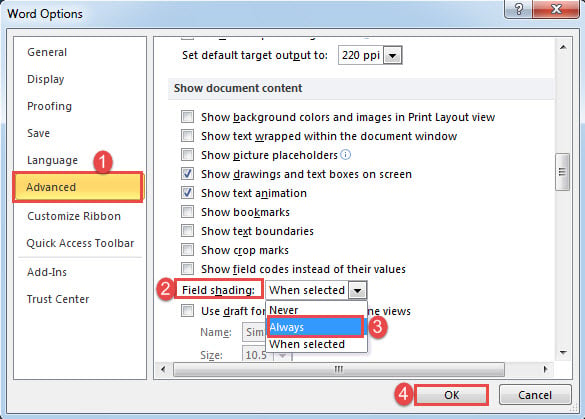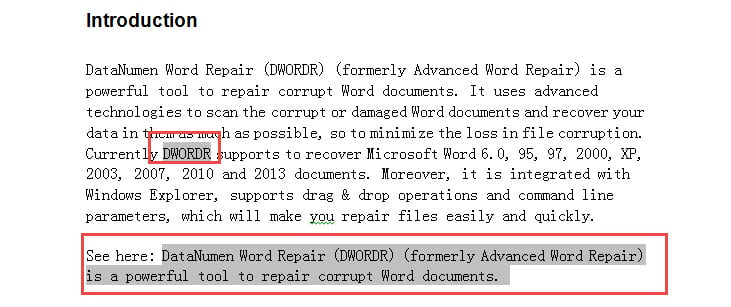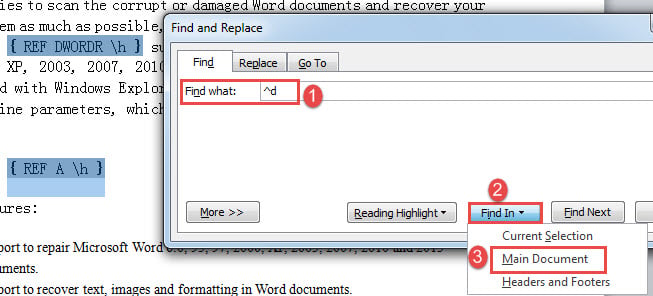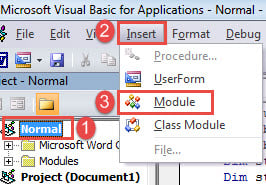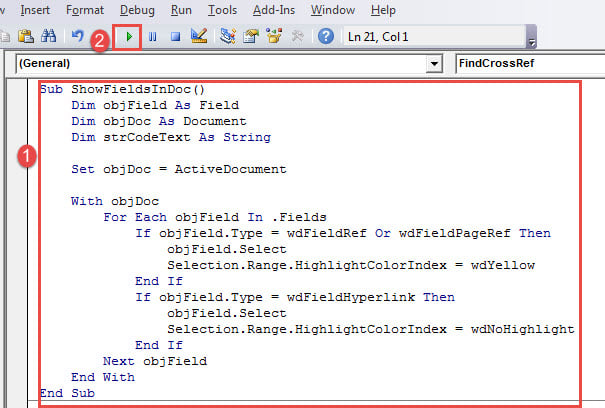In today’s article, we are thrilled to present you 3 quick ways to find all fields in your Word document.
By default, the fields we insert into Word document take the same text style as normal one. Therefore, you will find it hard to distinguish them from plain texts. This can leads to accidental editing or deletion of an important field. This article is dedicated to 3 quick workarounds to stand out fields.
Method 1: Alter the “Word Options”
Generally, you can see the gray shading when you hovering cursor over a field. Such shading is like a kind of identification for field. The good news is you can turn it on even the cursor is not over a field.
- Firstly, click “File” tab.
- Then click “Options” to open “Word Options” dialog box.
- Next click “Advanced”.
- Scroll down to the “Show document content” section. Find the “Field shading” option and choose “Always” instead of the default “When selected”.
- Lastly, click “OK” to save the change.
You need to be aware that this modification affects globally. Not only fields on this document but all other ones now have field shading.
Method 2: Use “Find” Function
- First and foremost, press “Alt+ F9” to show all field codes.
- Next click “Home” tab and click the arrow button behind the “Find” command.
- On the menu choose “Advanced Find” to trigger the “Find and Replace” dialog box.
- Put cursor in “Find what” text box and enter “^d” to find all fields.
- Next click “Find In” and choose “Main Document”.
- You will see all fields are in selection now. You can choose to highlight them as to stand out.
- Finally, press “Alt+ F9” to toggle from codes back to text.
Method 3: Highlight All Fields via VBA
- To begin with, press “Alt+ F11” to quickly open VBA editor.
- Under “Normal” project, click “Insert” and choose “Module” to create a new one.
- Next double click to open the module as to bring out the editing area on the right side.
- Then paste the bellowing codes on the module:
Sub ShowFieldsInDoc()
Dim objField As Field
Dim objDoc As Document
Dim strCodeText As String
Set objDoc = ActiveDocument
With objDoc
For Each objField In .Fields
If objField.Type = wdFieldRef Or wdFieldPageRef Then
objField.Select
Selection.Range.HighlightColorIndex = wdYellow
End If
If objField.Type = wdFieldHyperlink Then
objField.Select
Selection.Range.HighlightColorIndex = wdNoHighlight
End If
Next objField
End With
End Sub
- Last but not the least, click “Run”.
This macro highlight fields in yellow, but leave hyperlinks intact whose default style is easy to recognize enough.
How to Efficiently Recover from Broken Files
Nowadays, it’s not unusual to encounter with docx damage, since we use Word so often to process documents. And you have to understand that being panic or mournful has nothing to do with efficient file recovering. Once file damage occurs, your primary option should be getting a fixing tool.
Author Introduction:
Vera Chen is a data recovery expert in DataNumen, Inc., which is the world leader in data recovery technologies, including xlsx damage and pdf repair software products. For more information visit www.datanumen.com

